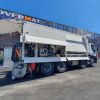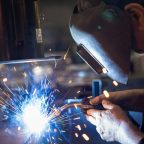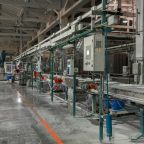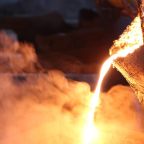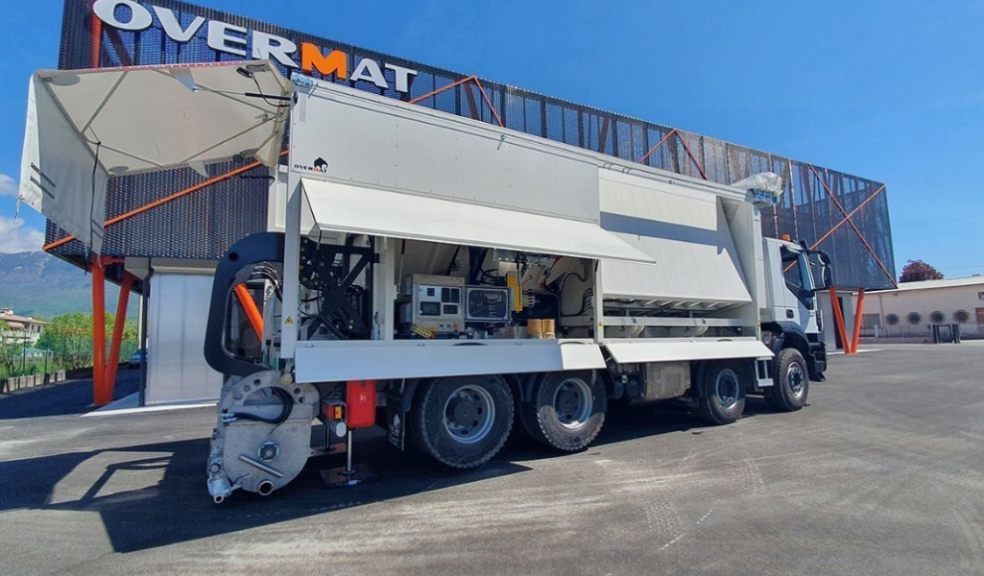
All you need to know about screed machines: types, features, and how to choose the right one for your needs
We rarely give it much thought, but every finished floor – from ceramic tiles to vinyl, from wood parquet to polished concrete – rests (and relies) on a layer that must be perfectly level, stable and compact: the screed.
Invisible to the eye once the flooring is in place, but crucial: the structural integrity and aesthetic quality of the entire building depend on it.
If the screed fails, everything above it is at risk, leading to cracks, uneven surfaces, insufficient insulation, or premature deterioration.
Laying a screed is not just a matter of mixing and pouring – it requires precision, timing, and, most importantly, the right machinery.
Not all screeds are the same, and neither are the machines
The term screed may sound simple, but actually there is a wide range of materials and techniques “hidden” behind it. Each type of screed has its own characteristics, formulae, applications methods and its “own” machine.
The most widely used type of screed is undoubtedly traditional screed — a classic sand-cement mix with minimal water content. Applying this screed requires a machine capable of handling dense, heavy material and pumping it efficiently over long distances.
These machines are equipped with both a mixer — typically a compulsory or drum mixer where sand, cement and water are combined directly on site — and a pump that transports the prepared screed mortar through hoses to the installation area.
This type of screed, and the machine used to apply it, is robust, versatile, and widely used across a broad range of applications.
Another common option is liquid screed, also known as self-levelling screed. Typically based on an anhydrite or cement, this self-levelling mixture is poured in fluid form. That is why it requires pumps specifically designed for liquid materials, ensuring a continuous, precise and uniform flow to avoid segregation or uneven results. Liquid screed, and its machine, are particularly well suited for large surface areas and underfloor heating systems.
Another widely used option is lightweight or insulating screed. In this case, the screed contains aggregates such as expanded polystyrene (EPS) beads, giving them thermal and acoustic insulation properties. Their lower density requires machines that can gently mix and transport the material without damaging their structure, ensuring a homogeneous distribution. They are often used as a base layer or in renovation works.
Technology and sustainability: the new frontier of screed machines
In recent years, screed machines have evolved fare beyond their mechanical role. Today, technology and sustainability are driving innovation in the sector, offering manufacturers smarter, efficient and environmentally conscious solutions.
Modern systems are increasingly equipped with integrated software that not only allows operators to save multiple mixing formulae, but also to customise key parameters such as mixing time and speed. These platforms often provide real-time monitoring of on-site operations as well as automatic generation of diagnostic and production reports, including data on material consumption, production volumes and machine status.
Some of the most advanced manufacturers of screed machines go even further. Overmat, leading name in the industry, is the only company in the world to have developed a system capable of analysing sand moisture in real time: the sensors automatically adjust the water content for each batch without operator input. The system continuously analyses sand moisture and instantly recalibrates water dosing to ensure a consistent mix, improving both the quality of the screed and the efficiency of the process.
But sustainability isn’t just about optimising processes - it also concerns the power supply of the machines themselves. More and more manufacturers, Overmat included, are now developing hybrid and fully electric systems for screed production, significantly reducing emissions and noise on site.
Choosing the right screed machine: more than just a technical decision
When choosing a screed machine, several factors must be taken into account. First and foremost is the type of material to be processed (whether it’s a traditional semi-dry mix, a flowing screed, or a lightweight insulating compound). Equally important are the scale and nature of the projects one typically handles: smaller construction sites may only require manual-feed mixing pumps, while large-scale or high-volume applications demand more advanced systems with higher output and performance capacity.
Other key aspects include the frequency of use, the complexity of site logistics, and the desired processing speed and precision.
However, while these material and project-based criteria are undoubtedly central, choosing a screed machine goes far beyond technical specifications. It is, in many ways, a strategic business decision, one that affects how efficiently a company can manage multiple projects, reduce operational costs, minimise waste, and meet sustainability goals over the long term.
That’s why this isn’t a decision to be taken lightly: it requires careful consideration and, above all, the support of a reliable manufacturer, like Overmat, a recognised industry leader. For over 20 years, Overmat has been at the forefront of the screed machine industry designing and manufacturing advanced, customisable screed systems, combining technical innovation with real-world construction needs. The company supports professionals at every stage of the process, from initial consultation to commissioning, training, and after-sales assistance, ensuring not just the delivery of a machine, but the success of the entire workflow.









